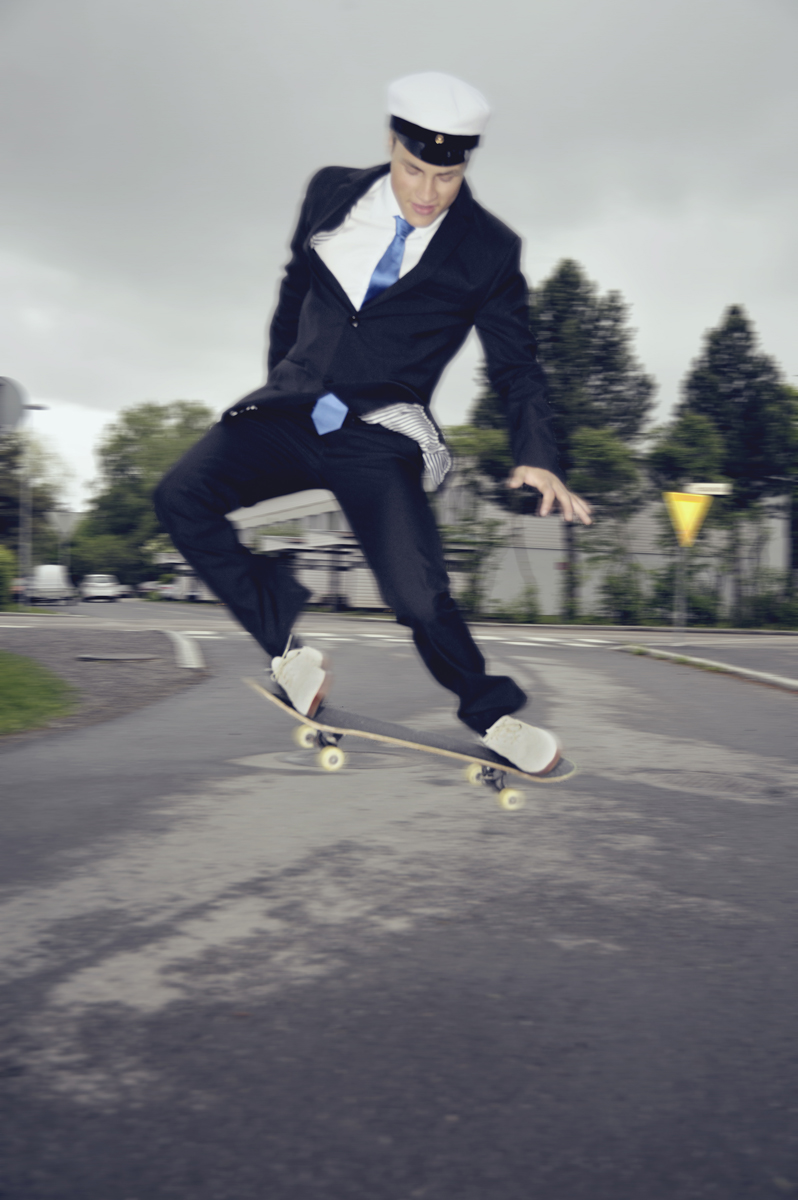The motivation behind this article was a photoshoot I had couple of weeks ago. On the eve of this occasion (where I was expected to take graduation photos of a pro skater), the weather report mentioned torrential rain. I knew two things: a) It would be a rushed, "let's-get-done-with-it-so-that-we-eat-cake"-kind of occasion; b) there would be a great chance I'd have to work in the rain. Although my Nikon D700
 |
| When the lights go down, the aperture needs to get wide. Primes have the upper hand there. |
Findings:
OK, let's cut to the chase. Let's assume a situation where the choice is between a fast midrange zoom (e.g. the Nikkor AF-S 24-70mm f/2.8
First of all, before I proceed to give you the comparison list, I must stress one very important aspect of the "Prime or Zoom" discussion: There is no sense at all in carrying with you both types. If you plan to go somewhere with a 24-70 f/2.8 zoom, it is entirely meaningless to also carry the primes.
Primes are Better because:
* they offer larger max. aperture (two stops if we compare f/2.8 with f/1.4), which means better low light capabilities
* in absolute terms, they will always yield better image quality (when we compare equal caliber lenses) compared to zooms, although differences can be minimal
* they are individually smaller, lighter lenses (but not when you have to carry more than one!)
Zooms are Better because:
* primes have a very limited focal length range (well, only one per lens!)
* No time wasted for swapping lenses, no risk for e.g. rain or dirt getting into the lens.
* although individually larger, it is much easier to carry a camera and its single zoom lens than a camera and three primes.
Putting it all together:
- Start by asking (and answering) a simple but critical question: "What focal lengths do I need for the photos I'm planning to take"? If the range is too great (for instance, a wedding requiring both wide shots of a cathedral and intimate portraits), carrying primes can be highly impractical. A 24-70mm and a 70-200 zoom combo would be all you need (compared to, what? 24mm, 50mm, 85mm, 135mm, 200mm primes?)
- Let's assume the range required is not that extreme. However, let's also assume the light will be bad and you need to cover fast action (basketball in a dimly lit gym, for instance). The difference between an 85mm f/1.4 and an "only" f/2.8 zoom is two stops, or the difference between 1/125 and 1/500 (or ISO 3200 and ISO 12800). If that is something you can live with, depends on your camera.
- A lot of things happening in quick succession. Balloons are released in front of the church *click*, rising rapidly up in the sky in front of the majestic churchbell *click*, the bride is crying in happiness *click*. Three photos taken within 5 seconds from each other, requiring (let's assume/guess) focal lengths of 50mm, 24mm, 85mm. You don't need me to tell you that you missed at least two (if not all) of these shots if you had a prime attached. You could get all of them if you had a midrange zoom attached, instead.
 |
| Zoom or Prime? It depends. It really does |
And that's the thing: Each lens (and each kind of lens) is made for a different purpose. I have another assignment in couple of days - it will be a studio portrait photoshoot, totally controlled environment. I will need only one lens for it - and it will be the Sigma 85mm f/1.4

No comments:
Post a Comment